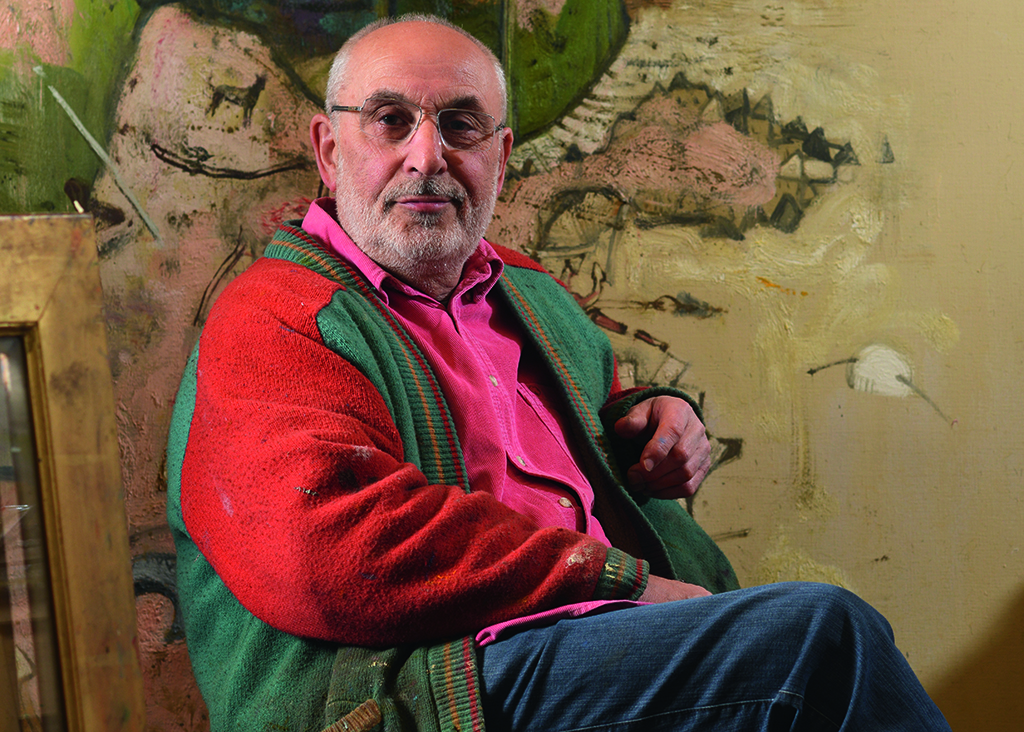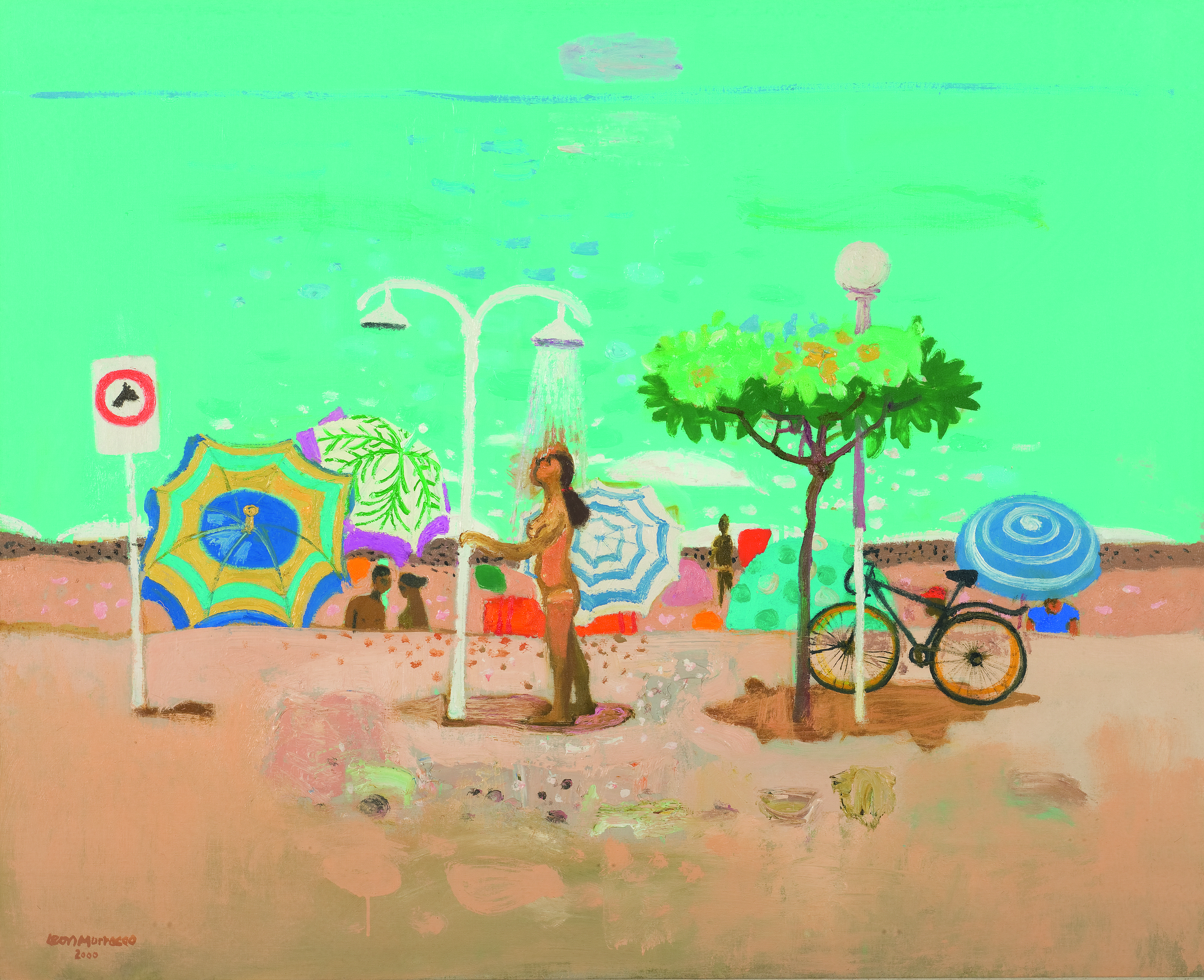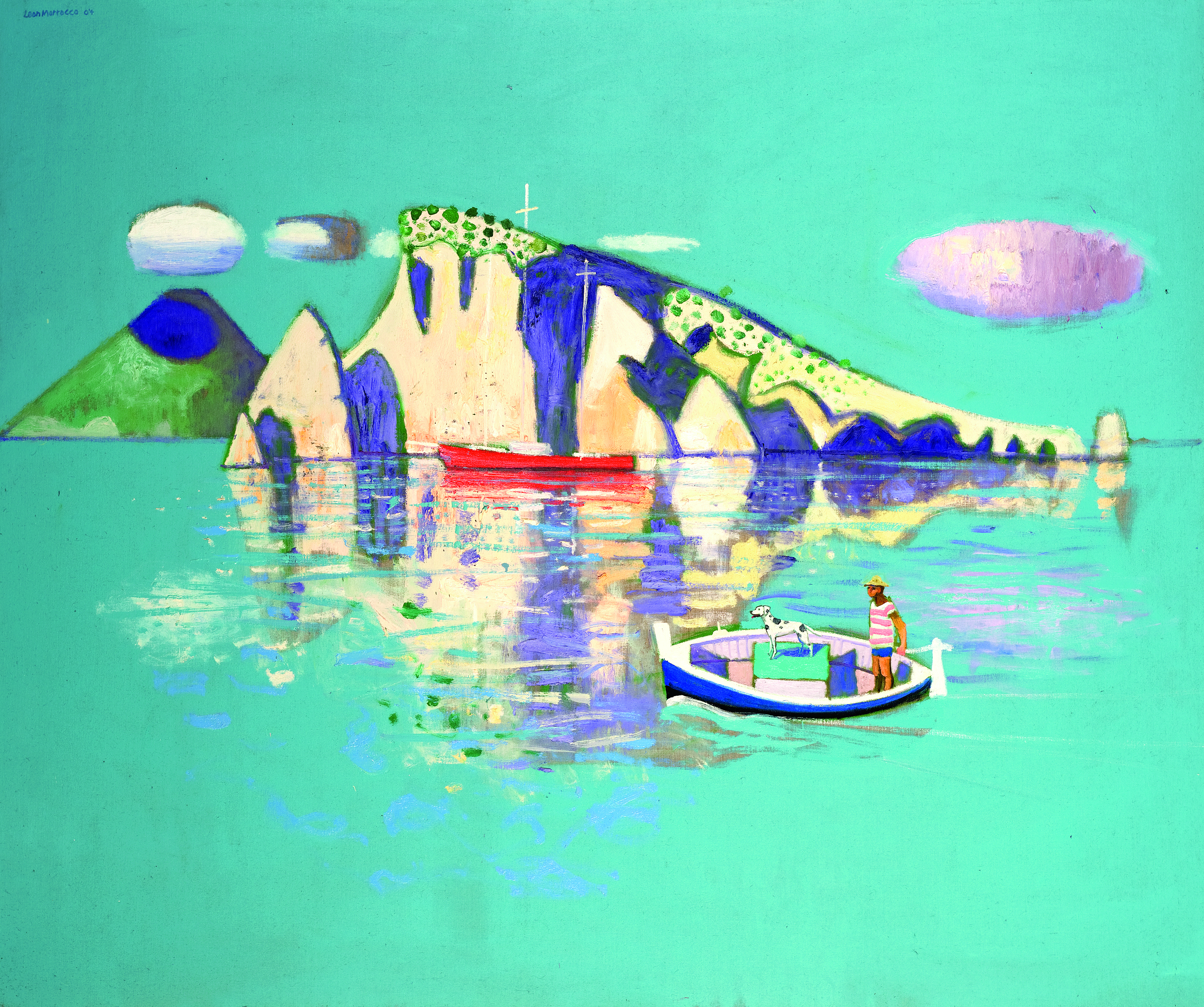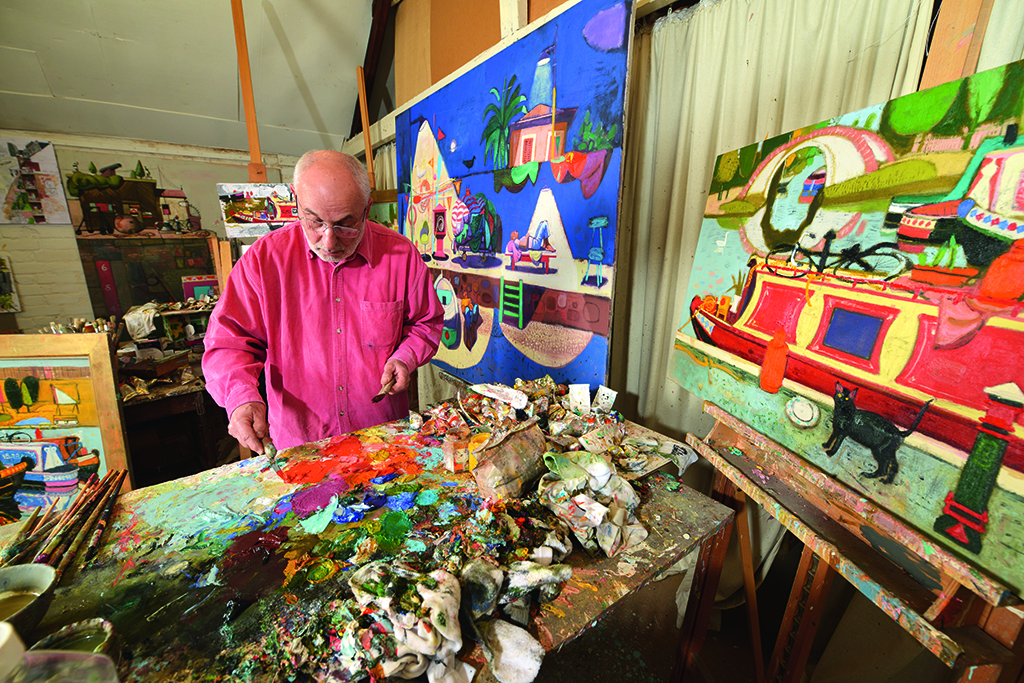Leon Morrocco is in an understandably reflective mood.
He spoke to Scottish Field in 2014, ahead of a retrospective of his work opening in Edinburgh and a show of new works in London.
‘It’s absolutely essential to go on learning and exploring,’ he says.
It is this continuing enquiry that has been the hallmark of a career that, to date, has spanned half a century. With a trademark style of vibrant colourful paintings, Morrocco, now in his early 70s, is one of Scotland’s best loved artists. So familiar is his work that it might come as a surprise to discover that he has spent so much of his life abroad. But as I talk to him at his London home, it quickly becomes clear that, as the son the of distinguished Scottish-Italian painter Alberto Morrocco, such a life was almost inevitable.
‘I grew up in an artist’s house,’ he says. ‘The idea of travelling was instilled in us early on. We went to Italy from the age of eight, shortly after the end of the Second World War. We would stay at a place near Rome called Anticoli Corrado. It had been an artists’ colony, where the Roman school of painting had been established and where it thrived from the 1920s to the 1940s. That’s where I started painting. I would be taking my father his lunch as he was painting away in the blazing heat.’

Leon Morrocco relaxing
Young Leon soon got bored and began to draw. ‘It seems now,’ he says, ‘as if I was always going to be an artist. My father didn’t push me into it. I just landed up in art school.’
Unfortunately, Morrocco junior’s first year at Edinburgh College of Art was spent under the tutelage of his own father. ‘I soon realised this wasn’t a good idea,’ he laughs. ‘I was never actually against what he was doing. I just wanted to do my own thing.’
There were other factors too, he says, which provoked a move to London. ‘When I was at Edinburgh, Robin Philipson was the college’s head of painting. I was into people like Morandi – you know: limited colour, considered composition. I remember Philipson once stopped a whole class to show how not to paint, through my interpretation of Morandi.’
By the early 1960s Morrocco was studying in London. ‘I went to the Slade. William Coldstream was in charge there and his approach was a bit like knitting. You would spend no fewer than two weeks in the life room. It was very calculated. I couldn’t do it temperamentally. I think his method was really a misconception of Cézanne. It eliminated the emotional response to the model.’

Shower on the Beach, Antibes, by Leon Morrocco
I wonder what Morrocco considers to have influenced his art back then, at a crucial stage in its development. ‘There were so many influences,’ he replies. ‘The Young Contemporaries was what was all the rage then but I wasn’t all that receptive to pop culture. I was into jazz. I think that the London jazz scene was an influence. One of the things about being a figurative painter is that you’re anchored, you’re responding to all sorts of stimuli. The intellectual side took second place for me – it still does. If I walk down a street in India, for instance, and I see a woman in a pink sari standing against a yellow wall, I just think, wow!’
Morrocco speaks of India, Italy and Australia with an easy familiarity. In 1979, at the age of 37, he moved to Australia with his own family, prompted in part at least by the continuing need to break free from the legacy of his father as much as a search for new stimuli. As he puts it, ‘the move was about cutting the umbilical cord’.
But if he had hoped for a major revelation, it came perhaps in an unexpected form.
‘I only painted my family. I just didn’t know how to cope with the Australian landscape. Most importantly, we discovered optimism. I went at a time when all was doom and gloom in the UK and over there, to my surprise, I found myself being included almost immediately along side such distinguished artists as Sidney Nolan and Arthur Boyd. It was an exciting time. It made me more expansive.’

Passing Baziluzzo, Sicily, by Leon Morrocco
On his return to the UK in 1991, Morrocco, who had enjoyed acclaim in Melbourne and Sydney, brought with him the confidence and vital energy that is still abundantly evident in the works on show at the Open Eye Gallery in Edinburgh, which include some sixty or seventy large drawings, some of them six-foot long and made in sections.
‘They’re really straight drawings,’ he says, ‘a response to the things in front of me. It’s about completing the thing on the spot. That’s a departure for me. I’m used to finishing things in the studio. So I think they were prompted by a sort of guilt. I also thought I should be able to paint something without travelling abroad for once.’
The works are a direct development from earlier work. ‘It started with a show about London’s bridges. I spent all of last year working on the Thames out of doors near Kew and Brentford. I started at Tower Bridge and moved gradually west, finishing off at Battersea Power Station. Then I began again at Kew Bridge.
‘I found a little island in the river. I got to know the people living there on the Dutch barges and became a sort of artist-in-residence. There I was, working on the riverbed at low tide every day. It’s a sort of field-trip mentality.’

Leon Morrocco at work in his studio in London
I suggest that perhaps in fact he is re-engaging with the roots of all modern figurative painting, the painting of real life championed by Baudelaire in 19th-century Paris.
‘There is an element of the journalist in me,’ he says. ‘I love the idea of recording things in society. It has been very fruitful and unexpected and it has also helped me to rethink colour. I’d been to India too. I think I was forcing the thing. It was getting a bit too easy, too decorative. I needed to step out of my comfort zone. I don’t think artists do that often enough. I think we need a bit of an edge.’
He laughs and then admits that putting this survey together for the Open Eye has, in a way, upset him. ‘Looking back, I realised that you haven’t got enough time left to make the strides forward that you really want to make. At the moment I’m going to continue going down the Thames. I’m happy taking subjects closer to home now but I never know exactly where they’re going to go.
‘There’s a wonderful statement Renoir made the night before he died. He was painting a still-life of flowers and he just stood back and looked at it and said to his companion: “I think I’m getting somewhere now”.’
TAGS

